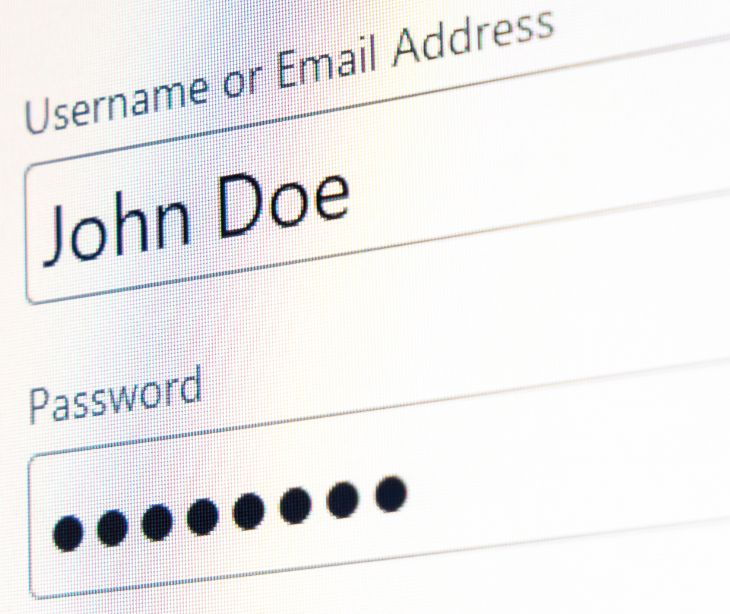
Credential stuffing is the automated injection of stolen username and password pairs (“credentials”) into website login forms to fraudulently gain access to user accounts.
It exploits password reuse patterns, posing a widespread threat by leveraging stolen credentials to gain unauthorized access to multiple online accounts, leading to data breaches, HIPAA violations, and compromised user and patient privacy.
According to the 2023 Verizon Data Breach Investigations Report (DBIR), external actors were responsible for 83% of breaches, and out of those incidents, stolen credentials were used in 49%.
How does credential stuffing work?
Credential stuffing involves exploiting stolen or leaked login information from one digital platform to gain unauthorized access to accounts on another service where individuals have reused their identical credentials.
The attack process involves the following steps:
- Data breaches: Cybercriminals acquire databases of login credentials through various means, such as hacking, phishing, or purchasing them on the dark web.
- Compilation of credential lists: The attackers compile large lists or datasets, of stolen usernames and passwords from multiple sources. These lists can include millions of credentials.
- Automated tools or scripts: Cybercriminals use automated tools or scripts designed to input the stolen username and password combinations into the login pages of various websites or online services. These tools are often programmed to simulate legitimate login attempts on a large scale.
- Multiple login attempts: The automated tools make a series of login attempts using the stolen credentials. Since many users reuse passwords across different platforms, attackers exploit this behavior to gain unauthorized access.
- Account takeover: If the stolen credentials match the login information of a user on a targeted platform, the attacker successfully gains access to the account.
Once inside, cybercriminals may exploit the compromised account for various malicious purposes, such as unauthorized financial transactions, patient data theft, or other fraudulent activities.
Common sources of credential spoofing
Credential stuffing attacks often leverage stolen or leaked login credentials obtained from various sources. Here are some common sources that cybercriminals use to gather the data needed for credential stuffing:
Previous data breaches
Data breaches involving major websites, services, or organizations can expose millions of usernames and passwords. Cybercriminals often target databases from these breaches to compile lists of login credentials.
Phishing attacks
Phishing attacks involve tricking individuals into revealing their login credentials by posing as a trustworthy entity. Once obtained, these credentials can be used in credential stuffing attacks.
Dark web markets
Cybercriminals may sell or trade stolen login credentials on dark web marketplaces, providing a convenient source for attackers to acquire large datasets.
Keyloggers and malware
Malicious software, including keyloggers, can capture keystrokes on infected devices. Cybercriminals use these tools to collect usernames and passwords entered by users, contributing to their arsenal for credential stuffing.
Related: How to identify and prevent malware in healthcare
Credential phishing kits
Some attackers create and distribute phishing kits, which are sets of tools and resources designed to facilitate phishing attacks. These kits often include pre-built phishing websites that capture login credentials when users unwittingly enter them.
Credential sharing
In some cases, individuals may willingly share their login credentials with others, knowingly or unknowingly contributing to the pool of data used in credential stuffing attacks.
Username enumeration
Attackers may use techniques to identify valid usernames on a target platform. Once a list of valid usernames is compiled, they can proceed with credential stuffing attacks to find matching passwords.
Brute force attacks
Brute force attacks involve systematically trying every possible combination of usernames and passwords until the correct combination is found. While not specific to credential stuffing, attackers may use the results from brute force attacks to build lists for credential stuffing attempts.
See also: HIPAA Compliant Email: The Definitive Guide
Types of credential stuffing
Credential stuffing attacks can take various forms, depending on the specific techniques and tools employed by cybercriminals. While the core method involves using stolen or leaked credentials to gain unauthorized access, there are different types of credential stuffing attacks based on the specific focus or approach. Here are some common types:
Mass credential stuffing
In mass credential stuffing, attackers use automated tools to launch large-scale credential stuffing attacks against multiple online platforms simultaneously. The goal is to exploit the widespread practice of password reuse across different services.
Targeted credential stuffing
In targeted credential stuffing, attackers focus on specific individuals or organizations. They may gather information about the target, such as email addresses and usernames, and then use stolen credentials to attempt unauthorized access to targeted accounts.
Credential stuffing as a Service (CaaS)
Some cybercriminals offer credential stuffing as a service on the dark web. They provide tools, resources, and access to compromised credentials for other criminals to launch their own attacks.
Password spraying
Password spraying is a technique where attackers use a small set of commonly used passwords across a large number of accounts. Instead of trying numerous username and password combinations for a single account, attackers try a few passwords against many accounts, hoping to find instances where users have weak or commonly used passwords.
Reverse credential stuffing
In reverse credential stuffing, attackers start with a known set of compromised credentials and attempt to identify the services or platforms where users have reused the same credentials. This method involves the reconnaissance and profiling of users to determine potential targets.
Credential stuffing with CAPTCHA Bypass
Some advanced credential stuffing attacks involve methods to bypass CAPTCHA (Completely Automated Public Turing Test to Tell Computers and Humans Apart) challenges, which are designed to distinguish between human and automated access. Attackers use tools or techniques to automate the solving of CAPTCHAs during the login process.
Credential stuffing with proxy networks
To evade detection and IP blocking, attackers may employ proxy networks to distribute their login attempts across multiple IP addresses. This helps them avoid being identified and blocked by security mechanisms that track login attempts from a single IP address.
Credential stuffing with session token abuse
Instead of focusing solely on username and password combinations, attackers may also abuse stolen session tokens. Session tokens are typically used to maintain a user's login state. If attackers can obtain and abuse valid session tokens, they can gain access without needing the actual username and password.
Defending against credential stuffing
Defending against credential stuffing requires a multi-faceted approach that combines user awareness, strong authentication practices, and robust security measures. Here are several strategies for defending against credential stuffing attacks:
- Use unique and strong passwords: Encourage users to create unique and strong passwords for each of their online accounts. Passwords should be complex, avoiding easily guessable information like birthdays or common words.
- Enable multifactor authentication (MFA): Implement multifactor authentication wherever possible. MFA adds an extra layer of security by requiring users to provide a second form of identification, such as a temporary code sent to their mobile device, in addition to their password.
- Regularly update passwords: Encourage users to change their passwords regularly.
- Monitor account activity: Implement monitoring systems to detect and respond to unusual account activity, such as multiple failed login attempts or logins from unfamiliar locations. Promptly notify users of any suspicious activity.
- Implement account lockouts and rate limiting: Enforce account lockout policies and rate limiting to prevent attackers from making multiple login attempts within a short period.
- Educate users on phishing awareness: Teach users to recognize phishing attempts and avoid clicking on suspicious links or entering login credentials on fake websites.
- CAPTCHA and Behavioral Analysis: Implement CAPTCHA challenges during login processes to distinguish between human and automated access. Additionally, leverage behavioral analysis tools that can detect anomalies in user behavior, helping to identify potential credential stuffing attempts.
- IP geolocation and device fingerprinting: Use IP geolocation and device fingerprinting to identify and block login attempts from suspicious locations or devices.
- Web application firewalls (WAF): Deploy a web application firewall to monitor and filter incoming traffic to web applications.
- Regularly audit and update security measures: Conduct regular security audits to identify vulnerabilities and weaknesses in your systems. Keep security measures up to date, including patches and updates for software and applications.
- Collaboration with industry partners: Collaborate with industry partners and share threat intelligence to stay informed about emerging threats and tactics used by cybercriminals.
See also:
- Why investing in ongoing cybersecurity training is good business
- What are the HIPAA audit requirements?
FAQ’s
What is multifactor authentication (MFA)?
Multi-factor authentication is a security process that requires users to provide two or more forms of identification before granting access to an account. This typically involves something the user knows (password) and something they have (such as a temporary code sent to a mobile device).
Go deeper: Enhancing HIPAA compliance with multi-factor authentication
Why is password reuse a risk in credential stuffing attacks?
Password reuse is a risk because if a user's credentials are compromised on one platform, attackers can use the same credentials to gain unauthorized access to the user's accounts on other platforms where the same password is used.
What role do CAPTCHAs play in defending against credential stuffing?
CAPTCHAs (Completely Automated Public Turing Test to Tell Computers and Humans Apart) are used to distinguish between automated bots and human users during the login process. They can help prevent or deter automated credential stuffing attacks by requiring users to solve challenges that are difficult for automated scripts to pass.
How often should users update their passwords to protect against credential stuffing?
Users should update their passwords regularly, aiming for a schedule that fits their security needs. Best practices often recommend changing passwords every three to six months. Regular updates help mitigate the impact of compromised credentials and enhance overall account security.
Subscribe to Paubox Weekly
Every Friday we'll bring you the most important news from Paubox. Our aim is to make you smarter, faster.



